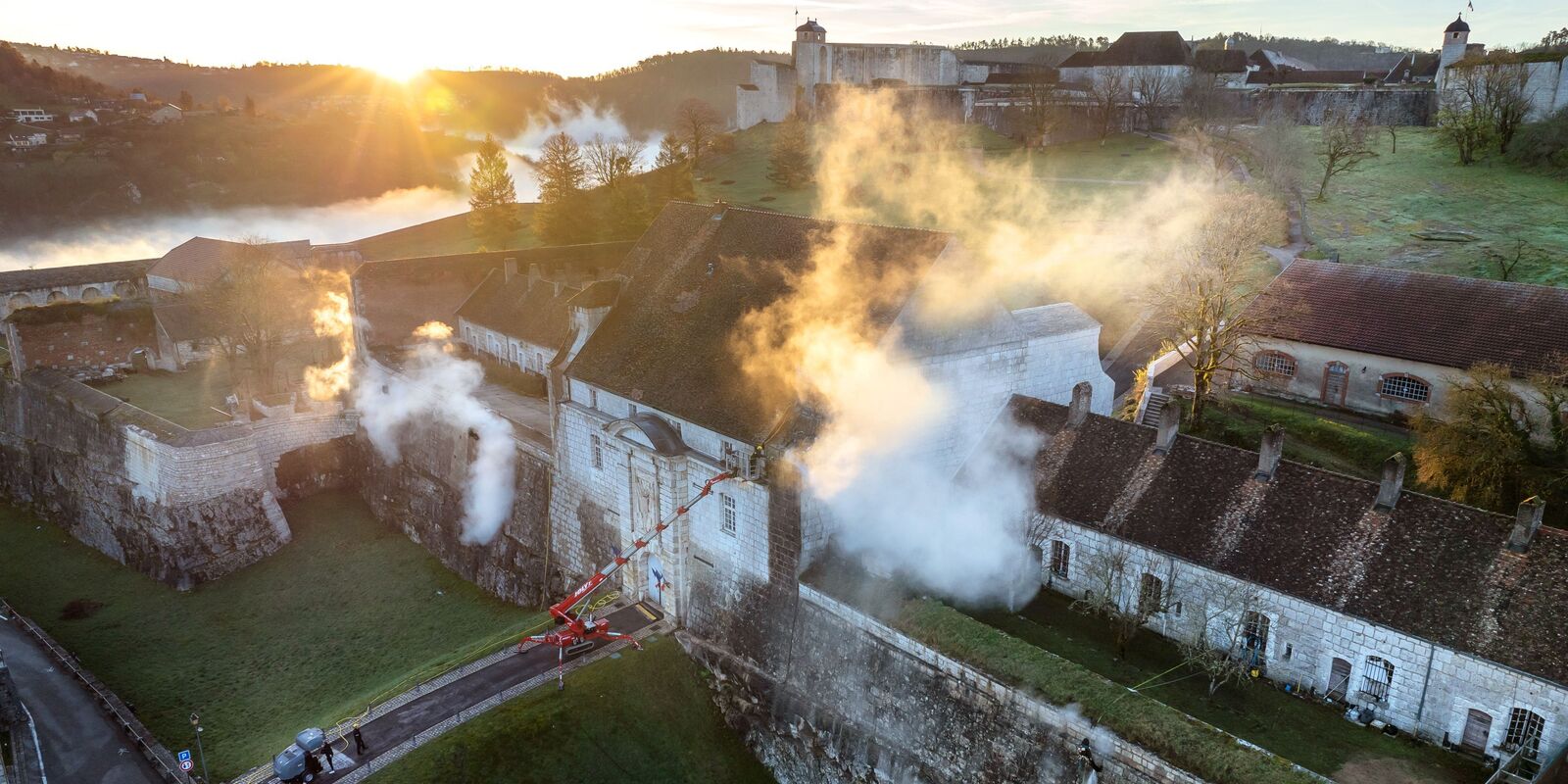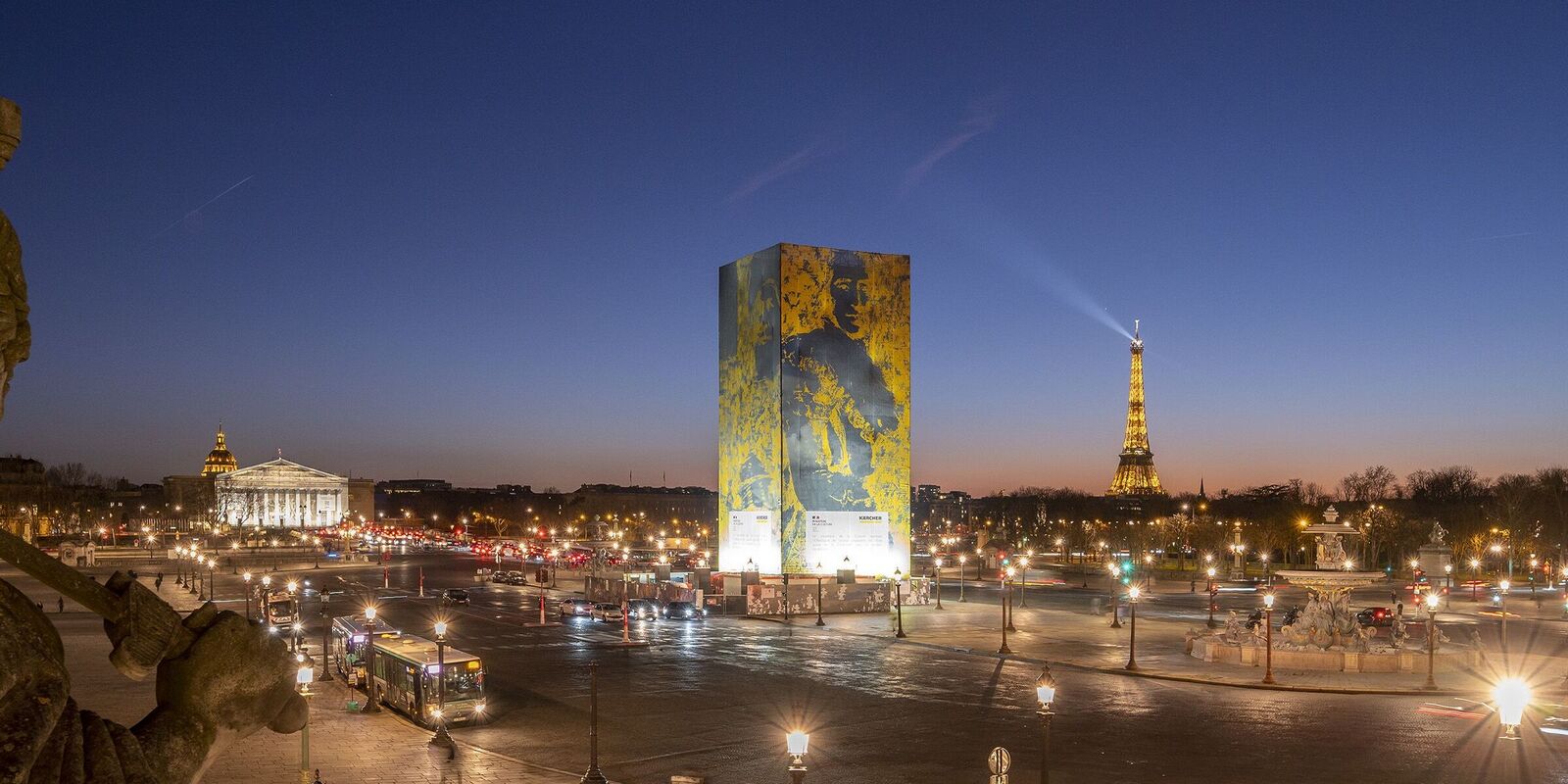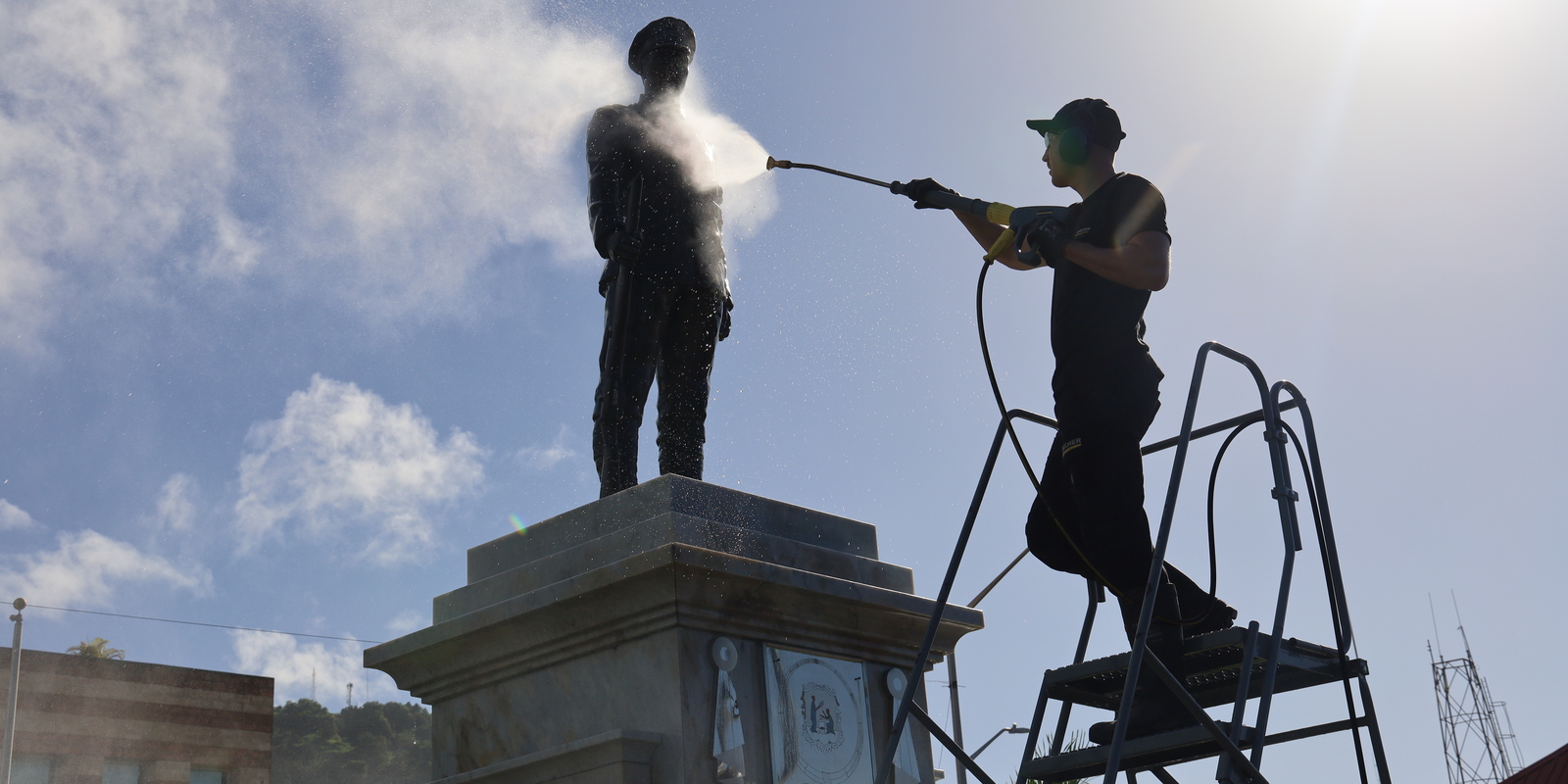Cleaning tests in an Egyptian tomb
As part of its cultural sponsorship, Kärcher helped to find the appropriate cleaning technique for hieroglyphics in a 2,500-year-old tomb in the necropolis of al-Asasif in the Western Thebes region of Upper Egypt.
International research team
The mysterious tomb of an ancient Egyptian priest, unexplored passageways and chambers deep underground, close to the historical treasures of Luxor – keywords that should make friends of ancient Egypt or history enthusiasts sit up and take notice. As part of its cultural sponsorship, the family-owned company Kärcher was able to make a contribution to research in the tomb of Padiamenope. The tomb of Padiamenope, the chief reading priest, known as TT33, was built around 550 BC. It contains 22 pitch-black chambers on three levels at depths of up to 20 meters. A French research team from the Institut Français d'Archéologie Orientale, the Louvre in Paris and the University of Strasbourg, led by the University of Cagliari, has been researching the site, which is inaccessible to the public, for several years and asked Kärcher for support in creating test areas.
Millennia-old pollution
“The team had been looking for the right method to clean the hieroglyphic walls in the tomb for quite some time. The big challenge here is that some of them are covered with thousands of years of dirt, such as soot from torches or fire and layers of bat excrement. We were asked whether we could carry out cleaning tests using the low-pressure microparticle beam method and also help to set up the necessary technical infrastructure,” reports Thorsten Möwes, Senior Specialist Cultural Sponsorship at Kärcher.
Right picture: The tomb is located in the necropolis of al-Asasif near the Valley of the Kings. The entrance is located in a valley in the center of the picture near the two white tents.
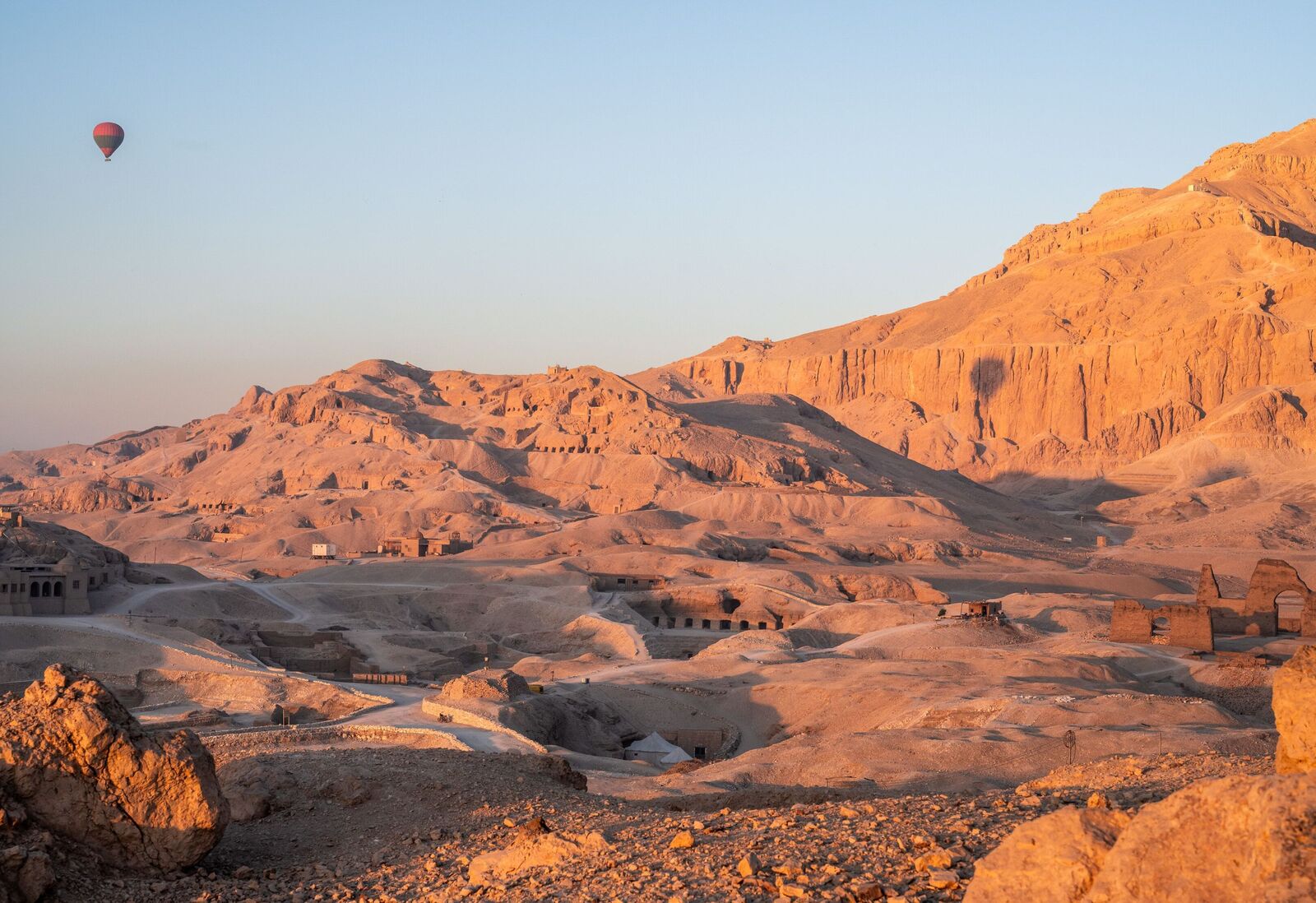
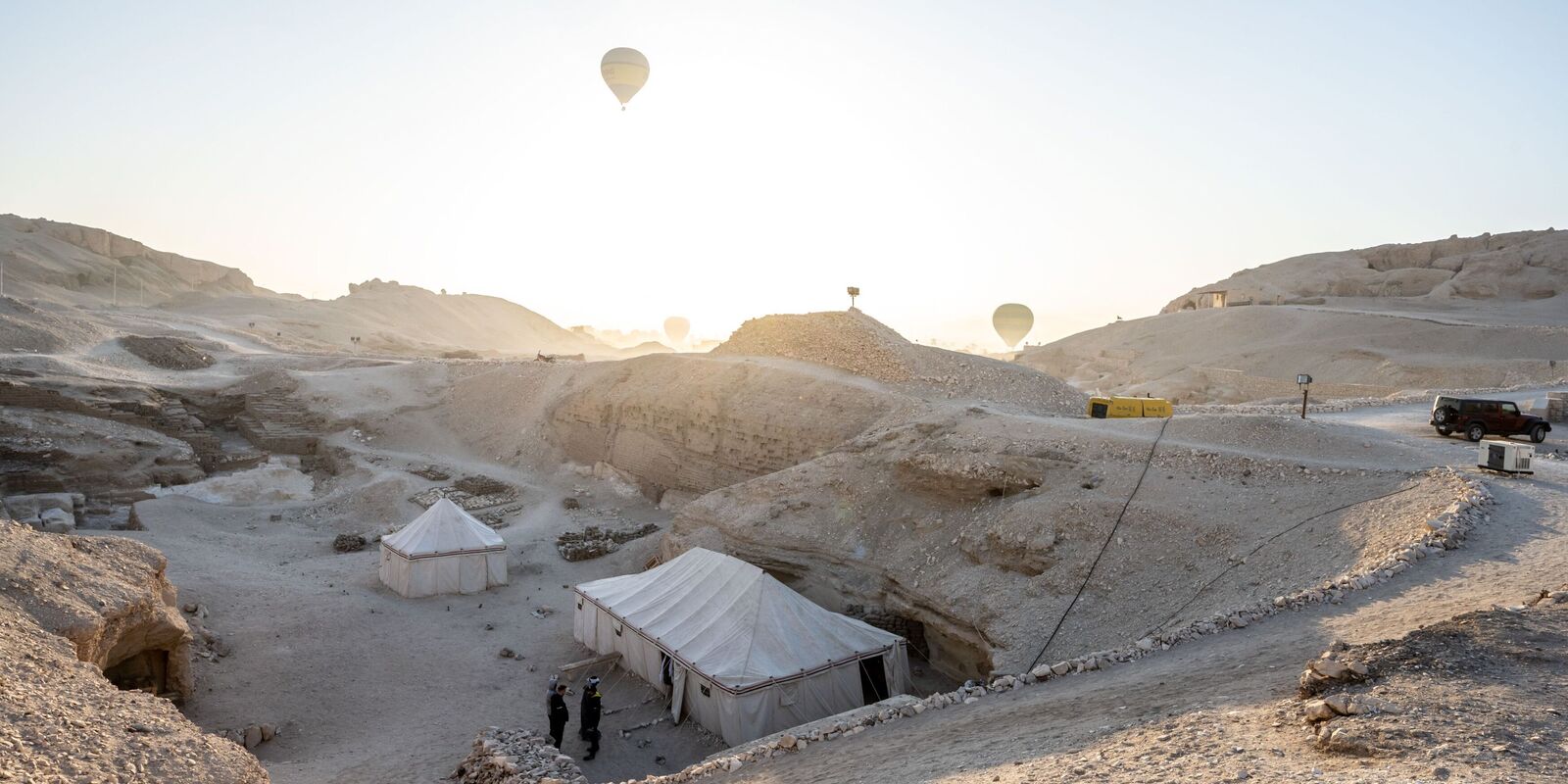
The camp for the research team was located directly at the entrance to the tomb.
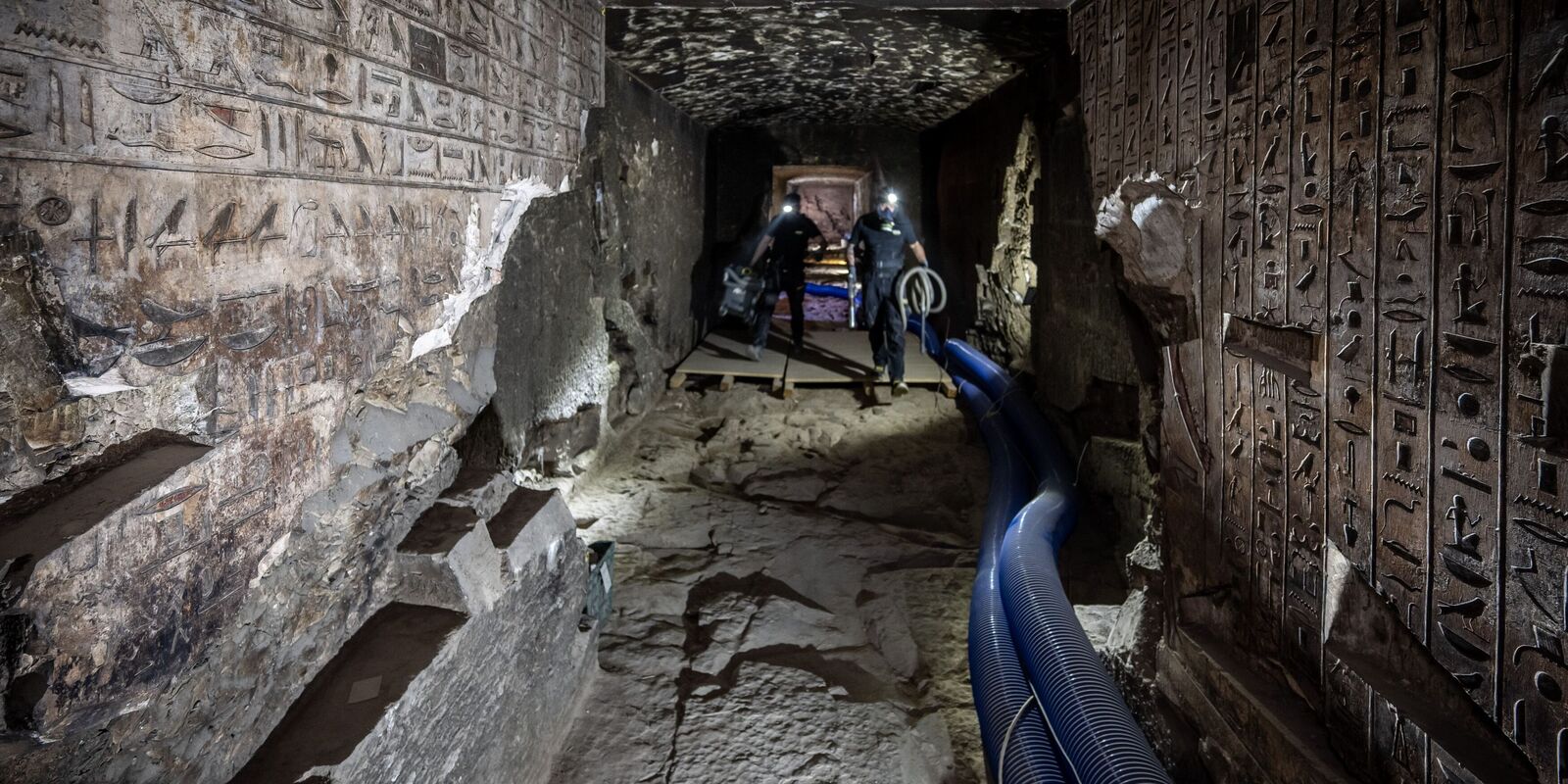
The corridors and chambers inside the tomb are decorated with countless hieroglyphs.

Various test areas were created to research the right cleaning technique.
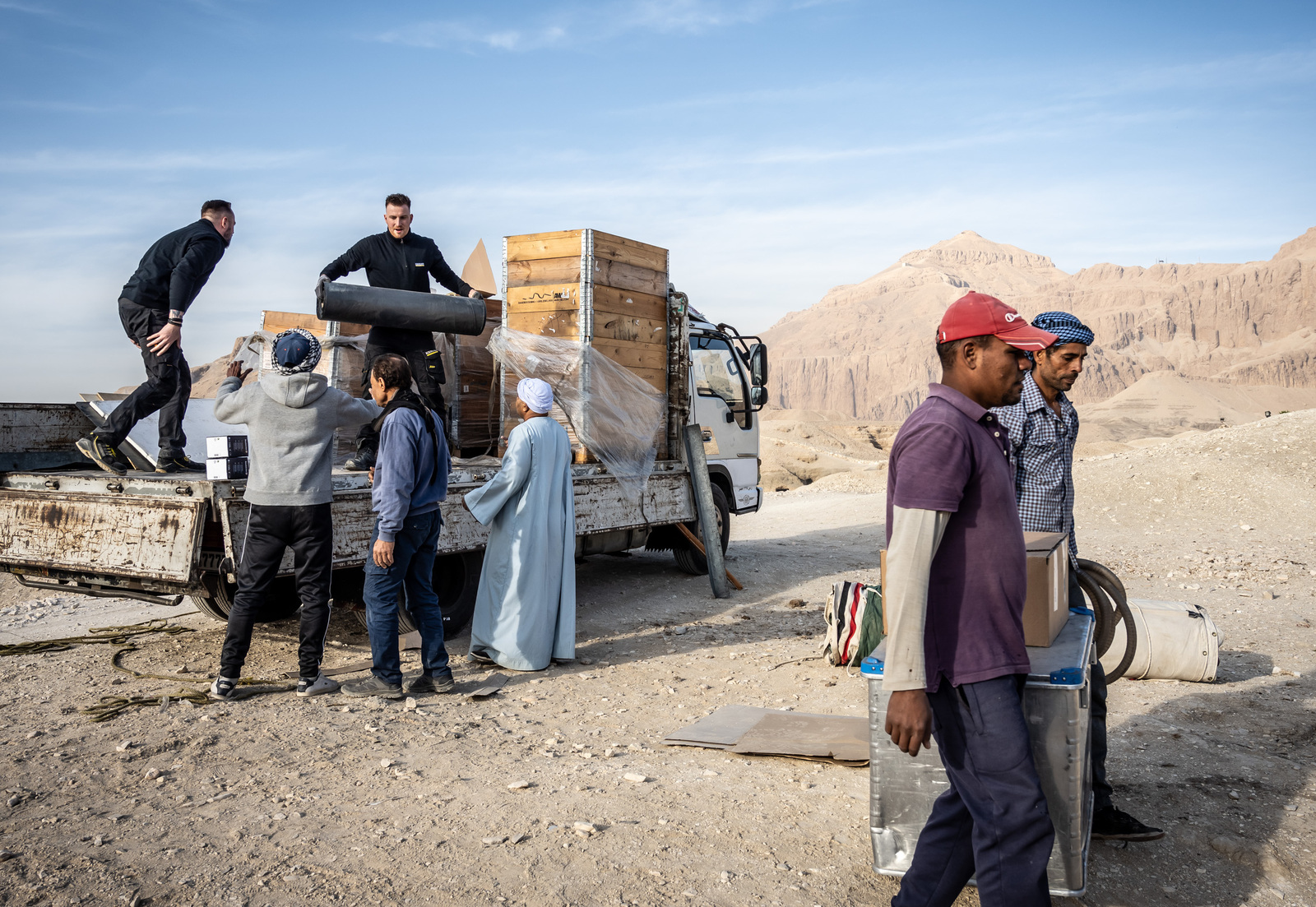
Technical challenges
Although the test required an high level of effort, Kärcher supported the project. After months of preparations in Germany, Thorsten Möwes and a team of Egyptian and German colleagues spent three weeks on site, bringing with them six pallets of technical equipment from Germany, including breathing masks, tools, air hoses, blasting agents and the particle beam guns. The challenge was, on the one hand, the persistent and uneven soiling of the hieroglyphics. The lack of electricity, light and ventilation in the middle of the desert made the task even more difficult. A specially purchased generator provided the important electricity, and the as-yet unexplored floor was protected with reed mats and timbered board crossings.
Poisoned air in the burial chambers
Since the air in the tomb is contaminated by bat excrement, some of which is thousands of years old, and the dust from particle blasting (the cleaning method) must not be inhaled, the team members only worked with full respiratory protection. Furthermore, the same dust was not allowed to spread on the historic floors and walls in the burial chamber, which is why customized dust protection doors were installed and a dust extraction system was set up. Remains of the blasting agent were picked up with Kärcher vacuum cleaners and removed from the burial chamber.

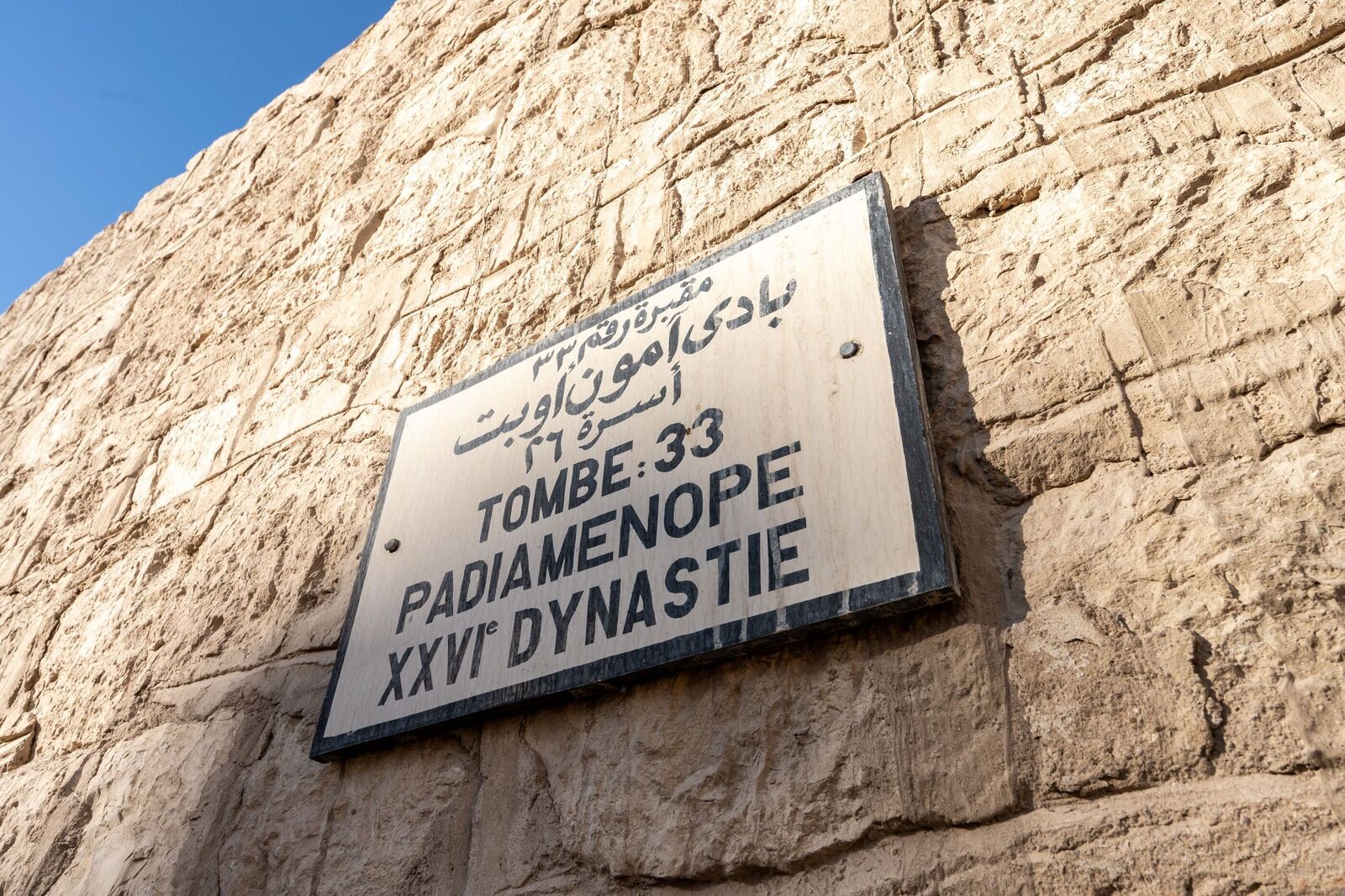
All facts at a glance
Country: Egypt
Place: Thebes-West
Soiling: Soot, bat droppings
Cleaning technology: Low-pressure particle blasting, other techniques
Execution: January 2024

